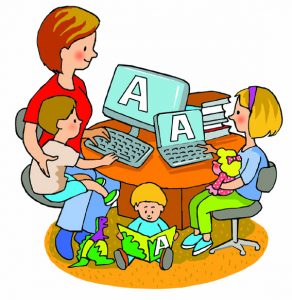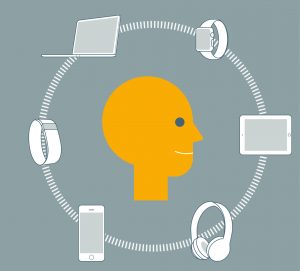Mal Lee
The COVID experience not only accelerated the natural growth of the teachers’ digital mindset, and its application in teaching but it also sped the in-school use of the digital competencies the teachers were using every day in their personal lives.
Both are developments that have profound implications for principals, school communities, education systems, teacher educators – and treasuries.
They point to an aged formal system of readying teachers for a networked mode of schooling that has failed to deliver and it being superseded by the naturally occurring development that grows the digital competencies of all the world’s digitally connected.
A number of us argued in the 80s that the latter should be the approach adopted in schools.
Rather schools and systems opted to employ ineffectually, for 40 plus years a traditional, ‘expert’ designed, structured linear approach that had its origins in the Industrial Age.
Schooling worldwide since the introduction of personal computers into the classroom has seen the technology mainly as a tool, to assist improve academic performance. For most it has never been about change or evolution. Rather it has been and continues to be for most educators a ‘passive’ but increasingly sophisticated technology that can enhance traditional academic teaching and student performance.
Some of us, considering the implications of Moore’s Law (1965) contended the digital would never be a passive technology, and that as the exponential power of computing impacted it would naturally bring marked societal and organisational transformation, and the necessity of the world’s peoples to continually adapt their ways, thinking and skillset. Seymour Papert succinctly observed:
…What we are interested in is not what will happen if you bring in the technology and change nothing else, what we are interested in is how that technology helps us to rethink everything else…’ (Papert 1990, p. 9)
Our belief was that in using the evolving digital technologies in context teachers would naturally grow their competencies as the technologies became evermore powerful, sophisticated, user friendly and ubiquitous. We recognised good use could be made of in-house workshops and mentors but even in the 80’s contended the most effective growth would always come from natural, just-in-time, in context usage, where the teachers had agency of their growth.
Suffice it to say the establishment and its wish to control dismissed the natural evolutionary assumption.
Rather it contended that all teachers, K-12 must be formally taught how to use the ‘educationally appropriate’ tools, with all needing to be taught a largely constant, common set of competencies.
That stance was actively supported by generations of technology companies, all arguing all teachers must be able to use – and buy – their kit.
It is as if there was, and is, something laudatory about promoting global sameness and constancy – and hierarchical control.
Some might remember that at the height of the Microsoft hegemony the desired key computer competencies for all teachers from kindergarten upwards were those required to use Windows on PCs.
For many education technology ‘experts’ the perceived nirvana has been, and continues to be, the identification of a set of key digital competencies, their codification in a set of mandated standards, and obligatory formal teacher training and accreditation. The quest is exemplified in the 2017 European Digital Competence of Educators (2017).
In that quest there has been an almost universal disregard for wider society’s adaptation to the digital and the propensity therein of digital users to teach themselves how to use the technologies they desired. It was as if schools weren’t part of a networked society.
Perelman astutely observed in School’s Out in 1992 that near all the world’s users of personal computers were self-taught.
Thirty years on, and 50 years since Gordon Moore alerted the world to the natural exponential growth in the power of computing five billion plus (ITU, 2021) digitally connected people, over 60% of the world’s peoples have taught themselves to use some 5.5 billion plus highly sophisticated smartphones and all manner of other digital devices (Ericcson, 2021).
Among that five billion plus are most of the world’s teachers, all using in their personal lives their desired digital devices, and naturally growing the desired digital capabilities.
Significantly teachers K-12 worldwide immediately drew upon those devices and capabilities when the COVID pandemic forced the school doors to close and the remote teaching to be done from the teacher’s homes.
They instinctively used the competencies acquired in being digital, with near all having the confidence, understanding, competencies, connectivity, and digital devices and infrastructure required to undertake most of their teaching competently online, invariably without any help from government.
Reflect on the competencies you used, and how you developed them.
Likely the most important was the confidence not only to use those competencies in your teaching but to build on those capabilities when needed. Relatively few teachers had been schooled in the use of Zoom, or Teams, or the use of smartphones to conduct remote tutorials, but within weeks they were naturally using all manner of new online facilities.
Allied was likely the shaping of your application of the technology with a digital mindset. You knew the scene would continually evolve, the technology would become ever more sophisticated, that you could teach yourself the desired new competencies desired and how to draw upon the resources of a networked world.
The speed with which teachers K-12 worldwide were able to teach remotely would suggest many of the competencies you employed were the same as your colleagues, and like them your interests and area of teaching would have seen you also employ a suite of distinct capabilities. While all teachers could search, check their sources, record, create multi-media presentations, video conference, socially network, prepare PDFs, archive, and use all of digital communication the same teachers all rightly made use of their particular, often idiosyncratic competencies. Early childhood teachers, teachers of the autistic, senior physics, digital music, and modern history rightly have used the digital competencies and resources pertinent to their work.
The suspicion is that you, like your colleagues, naturally grew your digital competencies by using all manner of digital technologies 24/7/365. You never stop to think how many competencies you have, what they are or how yours differ from your partner’s or children, simply appreciating that in a connected world one has constantly to adapt, be it with the smartphone, streaming services, or smart speakers.
Every teacher, every citizen in living in a world of accelerating digital transformation has continually to learn how to use the new services and devices, and to put in the cupboard the dated technology, your beloved iPod, digital camera, games console, standard definition TV, CDs, and DVD player.
Teachers, as individuals have always had particular skill sets that they have brought to the teaching. There has always been the pianist, social organiser, wordsmith, photographer, and the numbers person to whom staff could turn for support.
The digital and the networks have not only provided teachers the freedom and opportunity to develop their interests and passions to a very high level, but also to share that specialist capability within the networked school community. Think of the specialist digital capabilities of your colleagues. On staff there could well be the spreadsheet, blogging, VR, digital lighting, video conferencing, audio recording, copyright, and podcast gurus.
Staff room experience affirms teachers rightly laud and appreciate that individuality and those specialist competencies, no matter how way out some might appear.
Significantly, like all digitally connected, you decided which digital competencies you wanted, how strong you wanted each to be, which were of limited importance, understanding what to do to enhance those competencies or to acquire new capabilities.
While at first glance seemingly obvious it bears underscoring the ‘core’ digital competencies of the digitally connected will always be rubbery, impacted by context and ever evolving; evolving at an accelerating rate. Key technological developments will continually change the core.
Globally schools and governments have long held a strongly hierarchical, insular view that they as the employer in charge of the ‘factory’ will decide on the digital competencies required of its employees.
Scant thought has invariably been given to the wider societal context, the digital transformation underway or the effectiveness of the socially networked world in identifying and growing those competencies.
In dismissing the notion of natural digital evolution and transformation schools and systems have since the early 80s employed in general terms a controlled, structured approach that has had as its the focus
- common mass use
- the mechanical skills required to use the ‘educationally appropriate’ tools devices
- the competencies the ‘experts’ believed would enhance academic performance, not those of everyday life
- teachers, K-12 – often across the education authority – mastering common computer/ICT/digital competencies
- getting teachers to teach and test the identified competencies
- the use of formal, linear instructional programs and, regular testing to develop the specified competencies. Control is paramount. Over the years all manner of ‘licenses’ have been awarded teachers on completion of those programs
- out of school staff training, undertaken when it fitted with the instructor’s schedule.
Teacher adoption of the prescribed competencies has been very slow.
In the 80s, 90s and even the 2000s many, possibly most schools and systems, still believed schools needed only a few expert teachers with the digital competencies, and that it was better the computer/ICT experts taught all students.
Around 2015 it was not uncommon even in the developed world, particularly in secondary schools, to have 75%-80% of teachers not using the digital every day in their teaching.
And yet early in 2020 when COVID closed the school doors and obliged them to teach remotely most every teacher could do so.
As could the students from kindergarten upwards.
Both the teachers and students drew on the competencies that came with being digital in a networked society.
And virtually overnight embedded the expectation that every teacher K-12 would normalise the use of the digital in their teaching, would increasingly shape that use with a digital mindset and use the digital competencies they used 24/7/365 in every facet of their lives.
Unseen to most the COVID shutdowns affirmed the observation made 40 plus years ago, that the growth of teachers digital competencies is best done naturally in the everyday use of the technology in a supportive environment, where the teachers control their own growth.
Teachers have that agency in their personal lives.
COVID, and the networked environment gave many teachers that agency in their teaching, at least for a time.
The expectations of the ‘new normals’ will work over time to extend that agency permanently in the classrooms.
That said most education decision makers won’t have seen, or indeed accept the success of the natural evolutionary growth of teacher’s digital competencies.
There are few signs that they will relinquish their perceived control.
I may be wrong.
What is the situation in your school? Is there any hint the school, or the system is rethinking its approach and giving staff greater agency and support to grow their own competencies?
The suspicion is that the issue of digital competencies will be another of the suite of traditional approaches being challenged, that will in time see the demise of the prescribed competencies.
- Ericsson (2021) Ericsson Mobility Report November 2021. Ericsson 2021 – https://www.ericsson.com/4ad7e9/assets/local/reports-papers/mobility-report/documents/2021/ericsson-mobility-report-november-2021.pdf
- ITU (2021) Measuring digital development. Facts and Figures 2021. Geneva International Telecommunications Union – https://www.itu.int/en/ITU-D/Statistics/Pages/facts/default.aspx
- Papert, S 1990, The Perestroika of Epistemological Politics. Keynote delivered at the World Conference of Computers in Education, Sydney, 1990.




